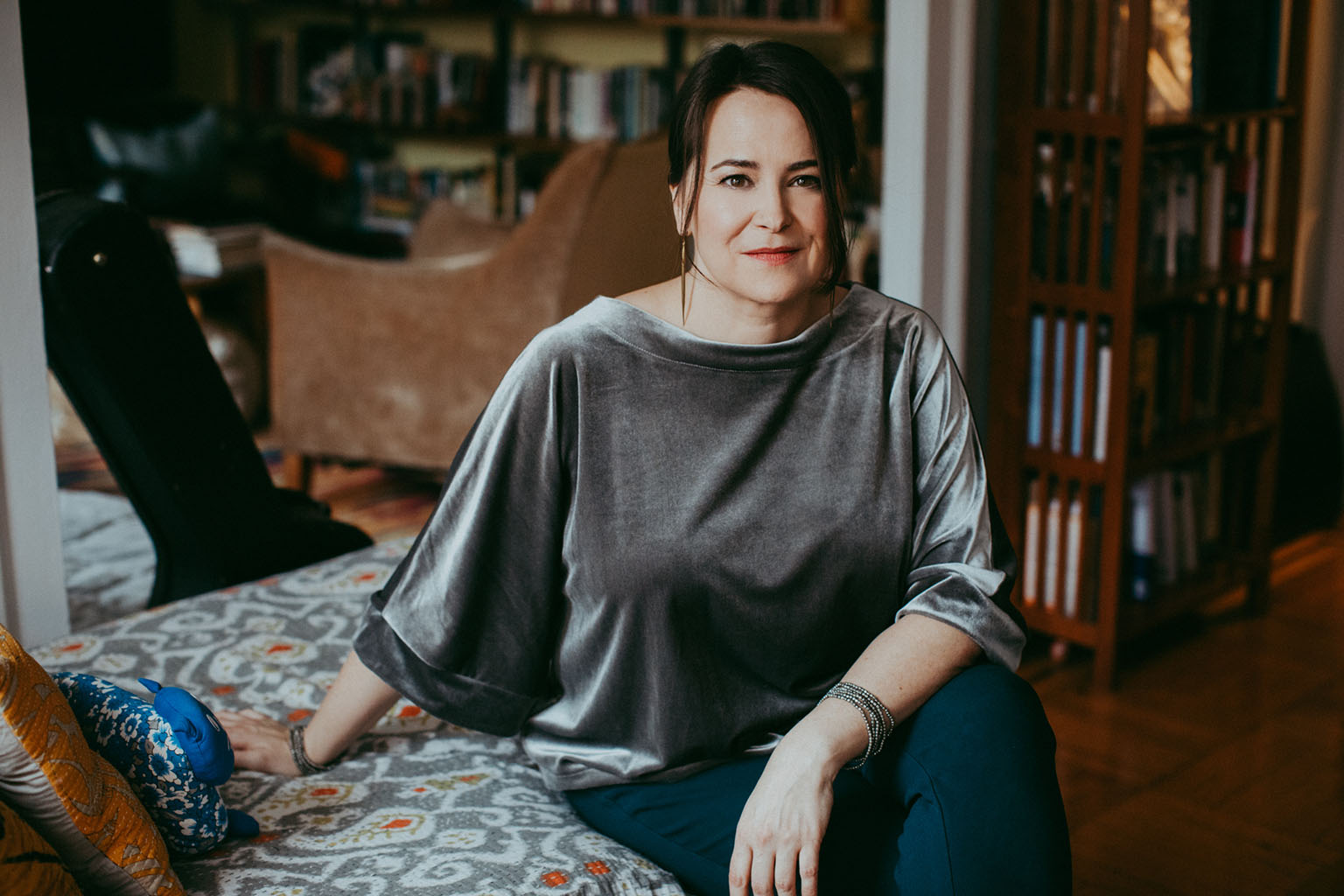Part book review, part impressionistic scribblings on the joys of reading and the struggles of carving out time in which to do it, #ABookishYear is a weekly dispatch from the front lines of an intellectual journey spanning fifty-two tomes.
The Cult of The Splits
By Roxanne Fequiere
I am lying flat on my living room rug with my feet planted on the floor, a rectangular orange towel in my right hand. Lifting the towel up above my face, I fold it once to make a triangular shape, the words “Let’s go” written across one side, “Mets” on the other, and grab a corner with each hand. My cat, Charlie, ambles over and parks herself at the edge of the area rug, eyeing the proceedings quizzically.
Lifting my left foot into the air, I swing the towel and hook it around my heel before straightening my leg completely. Tugging at the towel to bring my leg back towards my head, a breathless “wow” escapes me. It feels as if there is a seam—or, more accurately, a tightly wound cable—running from the back of my knee up to my backside, and each tug seems as if it may split it wide open. “Wow, wow, wow,” I chant, waiting for my thirty seconds to be up. Charlie flops onto her belly, still confused but content to watch me contort myself.
Even The Stiffest People Can Do The Splits was recommended to me as “this book by a Japanese woman about how to do a split,” which intrigued me enough to track it down, but didn’t do the genius of the actual title justice. Even the stiffest people? We may not think of ourselves as particularly flexible, but few of us would go so far as to place ourselves among humankind’s absolute stiffest. And even if you do—you, too, can still do the splits, according to this book. As for myself, I can bend at the waist and place my palms on the ground with a bit of strain, and I’ve been known to dabble in a bit of Pilates. If this title’s audience were a run club, I imagined I’d gravitate to the center of the pack.
“I’ve found myself eager to see just what my body can do, and Eiko’s chipper promises had me feeling like I could do anything.”
How-to guides that promise lofty goals like inner peace or improved interpersonal skills typically need to employ a voice that’s either casually conversational—a friend sharing how they achieved a task over drinks, rather than an enthusiastic evangelist chirping away at you while you wait for your drink at the bar—or blandly benign. When an entire book is dedicated to a singular and precise objective, there is room to proselytize. Eiko, the former aerobics instructor, current yoga instructor, and self-proclaimed “queen of the splits” behind this guide delivers her gospel with good cheer and a touch of wonder. “I was completely shocked when the video I made describing my method for doing the splits was viewed more than six million times,” she confesses. “Who knew so many people wanted to be able to do the splits?”
I certainly did not. To be fair, I’m not sure that I wanted to myself—until I became aware of a book that could teach me how. I was twenty-three when I tried ice skating for the first time. Not long before that, I learned to ride a bike. With a few exceptions—a short stint on my middle school soccer team, a few months running track, founding and co-captaining a step team in high school—I’ve spent the vast majority of my life preferring to stick my nose in a book rather than work up a sweat. In recent years, I’ve found myself eager to see just what my body can do, and Eiko’s chipper promises had me feeling like I could do anything.
“I’m more than a little skeptical of her bolder claims.”
It takes about thirty pages for Eiko to lay out her four-week plan. Every day, you simply do three stretches for a few minutes—two are repeated daily throughout, while the third changes once a week. The rest of the book is dedicated to “Act Two,” as Eiko calls it, a short story titled, somewhat harshly, ”How Are You Going To Achieve Anything If You Can’t Even Do The Splits?” The plot focuses on Makato Oba, a middle-aged man who has recently ”started to feel anxious about getting old,” and Ai Umemoto, a woman in her early thirties whose “days feel less than ideal and low on self-actualization.” Their coworker, Tetsuya Hori, has no such problems. He “carries himself elegantly and has a cheery, positive outlook,” in addition to a sparkling reputation at work. “His secret has an unlikely source!” the book teases. You can probably guess how the first two sad sacks turn their lives around.
“Sure, it’s just the splits,” she writes. “But it’s so much more than the splits. When you sweep away your inflexibility complex…. the confidence that comes from ‘getting over it’ is sure to suddenly make the rest of your life a little brighter.” I’m only a few days into my stretching regimen, and while I appreciate the reinvigorating sensation that comes along with Eiko’s limbering techniques, I’m more than a little skeptical of her bolder claims.
I get up from the floor and face Charlie, spreading my legs wide and pointing my feet outward. I bend my knees, trying to make my thighs parallel with the floor below, and start to bounce, beginning my sumo stretch. This movement awakens new stiff spots, and I look to the ceiling to steady myself, breathing deeply. When I look back down, Charlie is gazing anxiously into my eyes. “What?” I ask, but I get it. I probably look insane to her. “I’m fine,” I reassure her. “I only sipped the Kool-Aid.”
Featured Books
Roxanne Fequiere is a New York–based writer and editor who might just make it after all.
Return to
FEATURED INTERVIEWS








